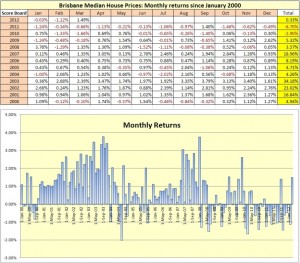Very interesting results from the new daily price index.
Australian home values are now in the black for the first time in 2012, having fully recovered from the drop recorded during the seasonally-weak month of January.
At 10 April 2012 home values across the eight capital cities had risen by 0.3% above their end 2011 levels (see first chart below).

link to article
Australian home values are now in the black for the first time in 2012, having fully recovered from the drop recorded during the seasonally-weak month of January.
At 10 April 2012 home values across the eight capital cities had risen by 0.3% above their end 2011 levels (see first chart below).

link to article


